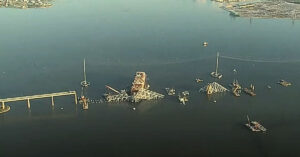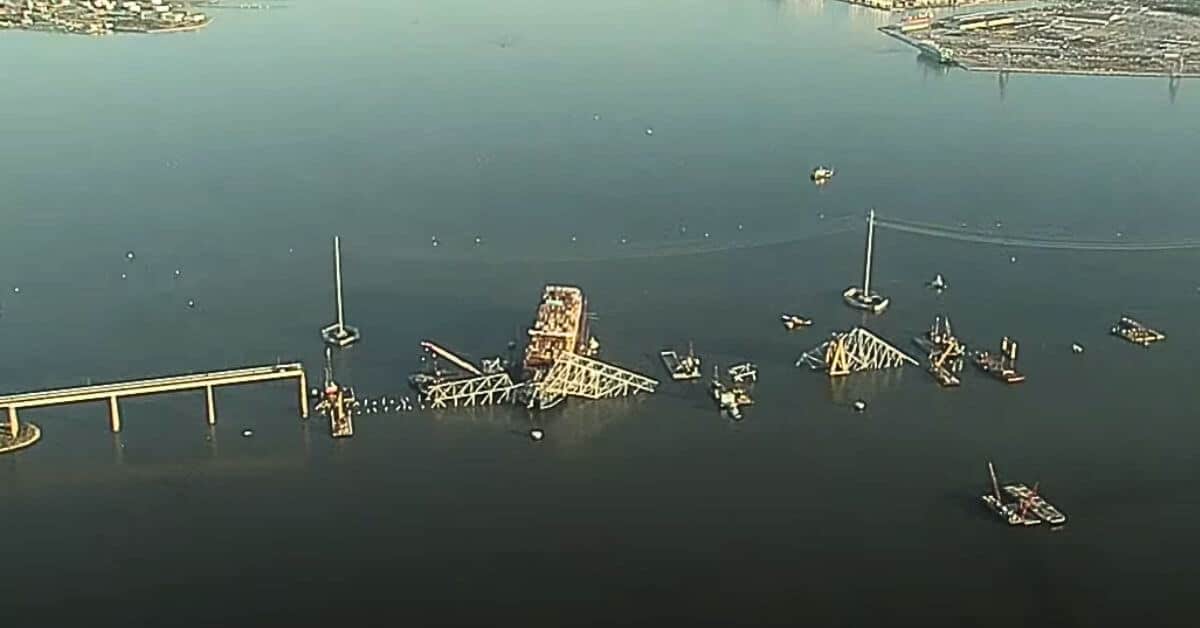
U.S Navy Fired $1 billion In Missiles To Counter Iran & Houthis In Middle East, Says Navy Secretary
April 17, 2024
MSC Assures Safety Of 25 Crew Members Onboard Cargo Ship MSC Aries Seized By Iran
April 18, 2024

The most recent incident occurred on 5 April, less than two weeks after the Baltimore catastrophe. A huge container vessel suffered propulsion failure near a bridge linking New Jersey to New York.
The APL Qingdao — stretching over 1,100 feet — experienced engine failure while navigating a narrow Kill Van Kull passage underneath the Bayonne Bridge, which several thousands of commuters use daily.
Maritime chatter refers to it as a “dead ship.” Three tugboats were called to guide the vessel to safety.
The vessel was compelled to drop anchor close to the Verrazano-Narrows Bridge, another busy bridge accessed by about 200,000 vehicles daily.
Ultimately, the vessel could continue the journey.
The 5 April incident is one of many observed over the past few years, particularly those involving cargo vessels losing power when near busy bridges or ports.
The failures put lives and property at high risk.
Although these disasters are rare, the conditions that might lead to them are frighteningly common, suggests a USA TODAY analysis of the U.S. Coast Guard maritime incident data log, which includes reportable maritime events that involved injury or death, collision, environmental harm, grounding, or loss of propulsion and power.
The increasing size of cargo vessels and the lack of stringent rules on tugboat escorts are part of the issue. Specialists say vessels become more susceptible to such casualties without proper guidance.
Specialists call for more comprehensive regulations and tugboats to escort the vessels.
Safety advocates reported that having guidelines and regulations in place for navigation boosts safety, particularly for vessels that encounter engine failure.
Video Credits: FOX 5 Washington DC/YouTube
The Washington Post discovered that vessels lost propulsion in nearly two dozen instances around Baltimore alone in the past three years before the Francis Scott Key Bridge incident.
A USA TODAY data analysis report highlights that at least 6,000 times in the past 22 years – an average of more than five times a week – crew members on board massive cargo vessels, oil tankers, cruise vessels, and container barges have informed of what befell the Dali: loss of power, propulsion, steering, or a combination of all three.
The U.S. Coast Guard identified several ships that hit objects when they lost power, including a vessel that struck a grain dock in the Lower Mississippi River.
The Washington Post reported that in some cases, ageing coupled with poor maintenance or faulty equipment was to blame for engine failure.
In other scenarios, human errors were the key cause of the issue.
At least 900 similar accidents have happened along bridges that the United States Department of Transportation continues to identify as spanning navigable waters.
Most were labelled as routine. However, a dozen were categorized as significant.
Some impaired the ships and structures they slammed into. Others had crew members suffer broken bones or other serious injuries.
However, most of these, including cases similar to the one in Baltimore, have not been made public and lie buried in a federal database.
Often, the thin dividing line between major and routine has boiled down to a last-minute effort driven by the crew members or rescue teams.
Reference: san.com
Baltimore Bridge Incident One In Hundreds In U.S, Caused Due To Ship’s Propulsion Failure appeared first on Marine Insight – The Maritime Industry Guide
Source: Maritime Shipping News


